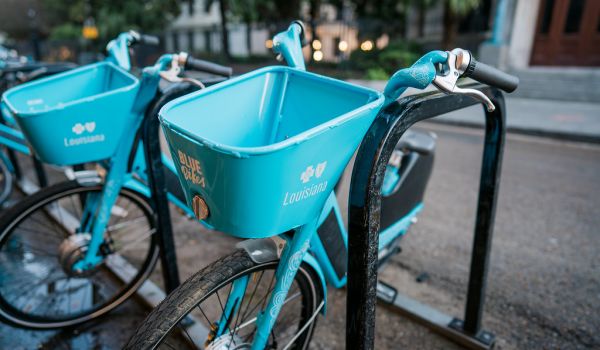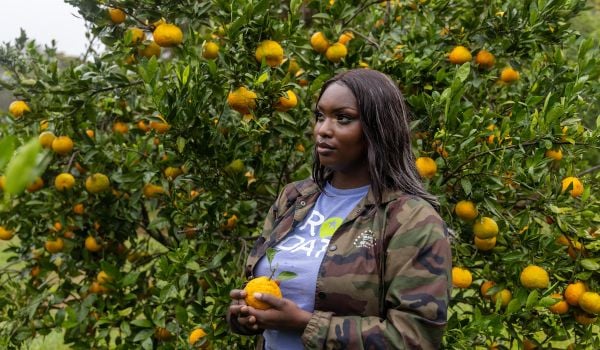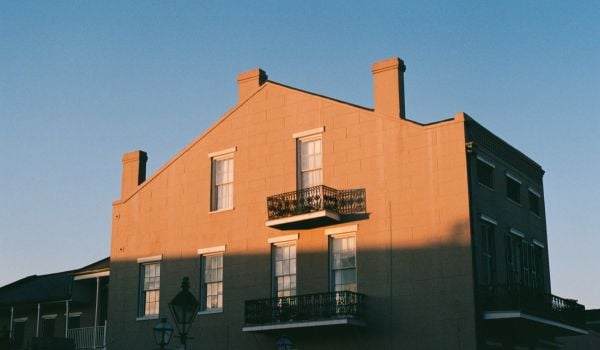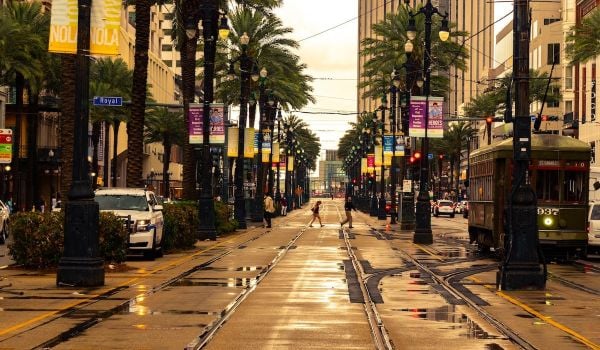The jaunty, slightly askance pink bowler hat on the head of former New Yorker diarist Dan Baum was the first clue that the prodigious chronicler of post-Katrina New Orleans might not be quite as canny about the Big Easy as he would like to believe.
The absurd hat, better suited to a late spring second line than the back of a book jacket, seemed to me a sign that the chatty writer believed that he not only got New Orleans, he owned it. I’m of this place, he seemed to be trying to say by wearing the hat in the author photo on the jacket of his new release, Nine Lives: Death and Life in New Orleans.
Well, the truth is Baum is about as of New Orleans as I am, which is to say not at all. That became all too clear to me as I read his post Friday on the New York Times “Happy Days” blog. The basic premise of the blog post is that the Big Easy, with its relentless parading and crawfish boiling, can teach the rest of America a thing or two about happiness.
“New Orleans can teach us that the life we build with our neighbors deserves at least as much attention as our endless thrust towards newer and bigger,” he concludes at the merciful end of the post.
With that, I don’t disagree. My neighbors in the Seventh Ward, with their unannounced visits, frequent outdoor parties and friendly greetings, have certainly exorcised the aloof East Coaster out of me. Where Baum gets in trouble is failing to reconcile this hackneyed, yet somewhat true, understanding of southeastern Louisiana culture with the more disquieting elements of life here.
Striving to contrast those non-New Orleanians who “scurry about with a Blackberry in one hand and a to-go cup of coffee” with the supposedly mellow people of this city, the twitter-happy writer declares that “New Orleanians rejected all the plans for a ‘bigger and better’ city, either by hounding the planners out of town or refusing entreaties to sell their ruined houses to developers. They’re putting New Orleans back together the way they like it, which is pretty much the way it was before Katrina. All the old neighborhoods are intact – even the Lower Ninth Ward, which was pronounced dead many times over.”
This point is patently false. Three years after Hurricane Katrina, a large chunk of the Lower Ninth Ward remains a vacant, weed-choked wasteland. Storm-damaged apartment complexes still dot Eastern New Orleans. The shopping mall there has nor yet been rebuilt, nor has the hospital. Baum goes onto assert that “life still revolves around second lines, the meticulous year-long building of Mardi Gras Indian suits, the boiling of crawfish and the lowing of saxophones.” Hmm, essentialize much?
Last time I checked, most people in the region are neither Mardi Gras Indians, nor musicians. Somehow between the second lines, my neighbors and I also do things that people in other parts of the country do, things like work, worry about expensive or non-existent health care, pay bills and try to find good public education for our children.
The biggest problem of the story, however, is its reinforcement of the false notion that New Orleans is somehow immune from the recession. While I agree with his pronunciation that “the gyrations of the Dow, the collapse of General Motors, the prospect of regulating credit default swaps — even the collapse of the housing markets — mean little to most New Orleanians,” I would argue that people here feel the repercussions of these things in the form of empty storefronts, stalled development and tightfisted banks.
The main commercial thoroughfare in my neighborhood — Broad Street— does not look significantly different now than it did a year ago or even two years ago when Baum left the city. Shops remain boarded. Stray cats languish in the empty parking lot in front of the shuttered Robert’s Grocery store. While a handful of new businesses have opened, most of them are gas stations or convenience stores owned by absentee landlords. Last week, a business owner petitioned the City Planning Commission for a zoning variance to open a pawn shop in an empty store at the busy intersection of Broad and Canal Street. Those who live in the time-worn, one-story homes that sit on either side of the four-lane highway worry that the pawn shop will attract other businesses, like payday lenders and check-cashing stores, which trade on desperation — and often exploit poor people. Yet with no other business stepping in to offer an alternative, residents are wary of fighting the pawn shop and being left again with the derelict building.
“No one was clamoring to be on Broad, even in good times, but in a better economy you typically would have seen better small businesses coming in to serve the neighborhood,” says Jeff Schwartz, an urban planner, and the director of a neighborhood development organization, Broad Community Connections. Schwartz says that the primary way the recession is coming home to roost is the lack of new investment coming to the city. “More new apartments would be going up if the economy had not tanked. The hospital wouldn’t be having the same degree of trouble getting financed,” he said.
Baum’s cliche-ridden reflection on New Orleans’ languid ways comes a few months after he offended people here by saying, in an interview with Marketplace’s Kai Ryssdal on National Public Radio, that he thinks “in 10 or 15 years New Orleans will be the disorganized, impoverished, violent, screwed up, corrupt city it was before the storm and that’s really the way they want it.” Baum blurted the prediction in response to Ryssdal’s asking if he worries that he’s been “too captivated by New Orleans to see the destruction?”
Somehow, the gregarious writer had the sense to publicly apologize for the off-hand remark somewhere between narcissistically narrating his firing from the New Yorker — and everything else— on Twitter to writing this latest piece.
But to return to the big picture, Baum’s myopic happytalk matters because New Orleans, like so many other parts of this reeling world, needs help. If decision-makers are mistakenly led to believe that New Orleans is doing better than the rest of the country, advocates will have a much harder time securing the outside resources people need in order to get back to sewing the Mardi Gras Indian suits and boiling the crawfish so highly valued by their non-resident scribe.
Ariella Cohen is Next City’s editor-in-chief.
Follow Ariella .(JavaScript must be enabled to view this email address)














